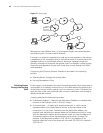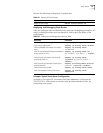
5
IP ROUTING PROTOCOL OPERATION
This chapter covers the following topics:
■ IP Routing Protocol Overview
■ Static Routes
■ RIP
■ IP Routing Policy
■ Route Capacity
IP Routing Protocol
Overview
Routers select an appropriate path through a network for an IP packet according
to the destination address of the packet. Each router on the path receives the
packet and forwards it to the next router. The last router in the path submits the
packet to the destination host.
In a network, the router regards a path for sending a packet as a logical route unit,
and calls it a hop. For example, in
Figure 22, a packet sent from Host A to Host C
goes through 3 networks and 2 routers and the packet is transmitted through two
hops and router segments. Therefore, when a node is connected to another node
through a network, there is a hop between these two nodes and these two nodes
are considered adjacent in the Internet. Adjacent routers are two routers
connected to the same network. The number of route segments between a router
and hosts in the same network count as zero. In
Figure 22, the bold arrows
represent the hops. A router can be connected to any physical link that constitutes
a route segment for routing packets through the network.
When an Ethernet switch runs a routing protocol, it can perform router functions.
In this guide, a router and its icon represent a generic router or an Ethernet switch
running routing protocols.


















